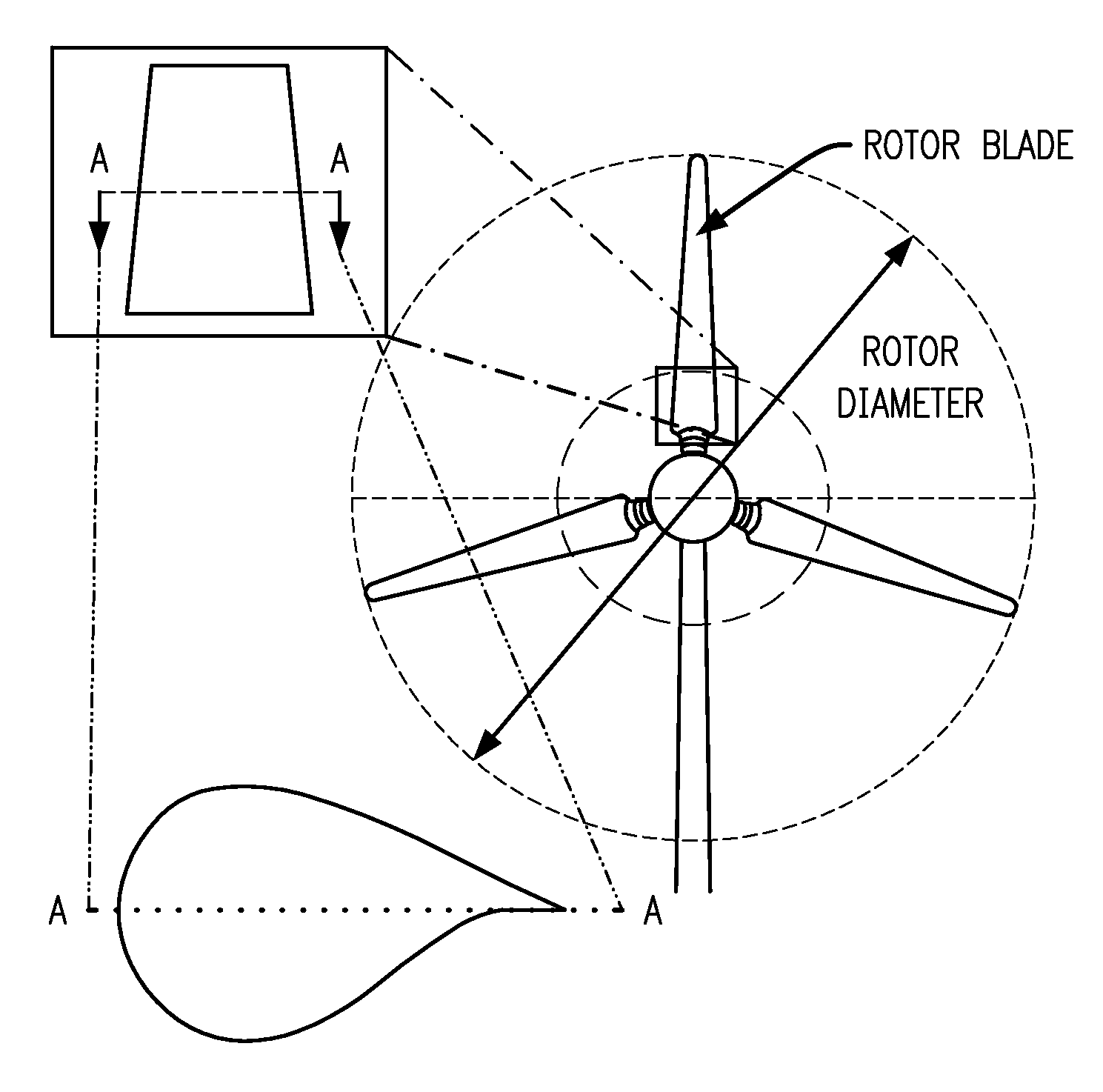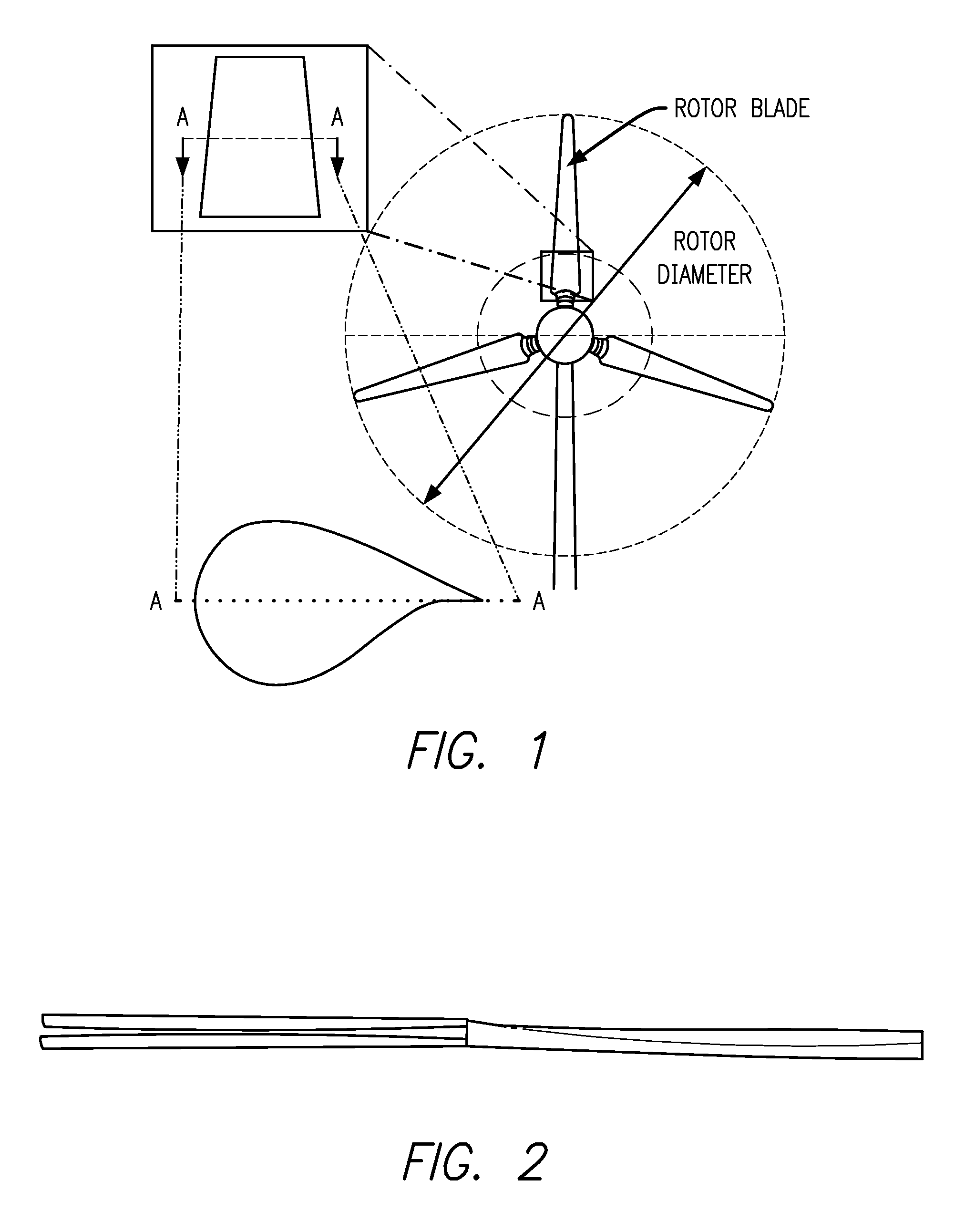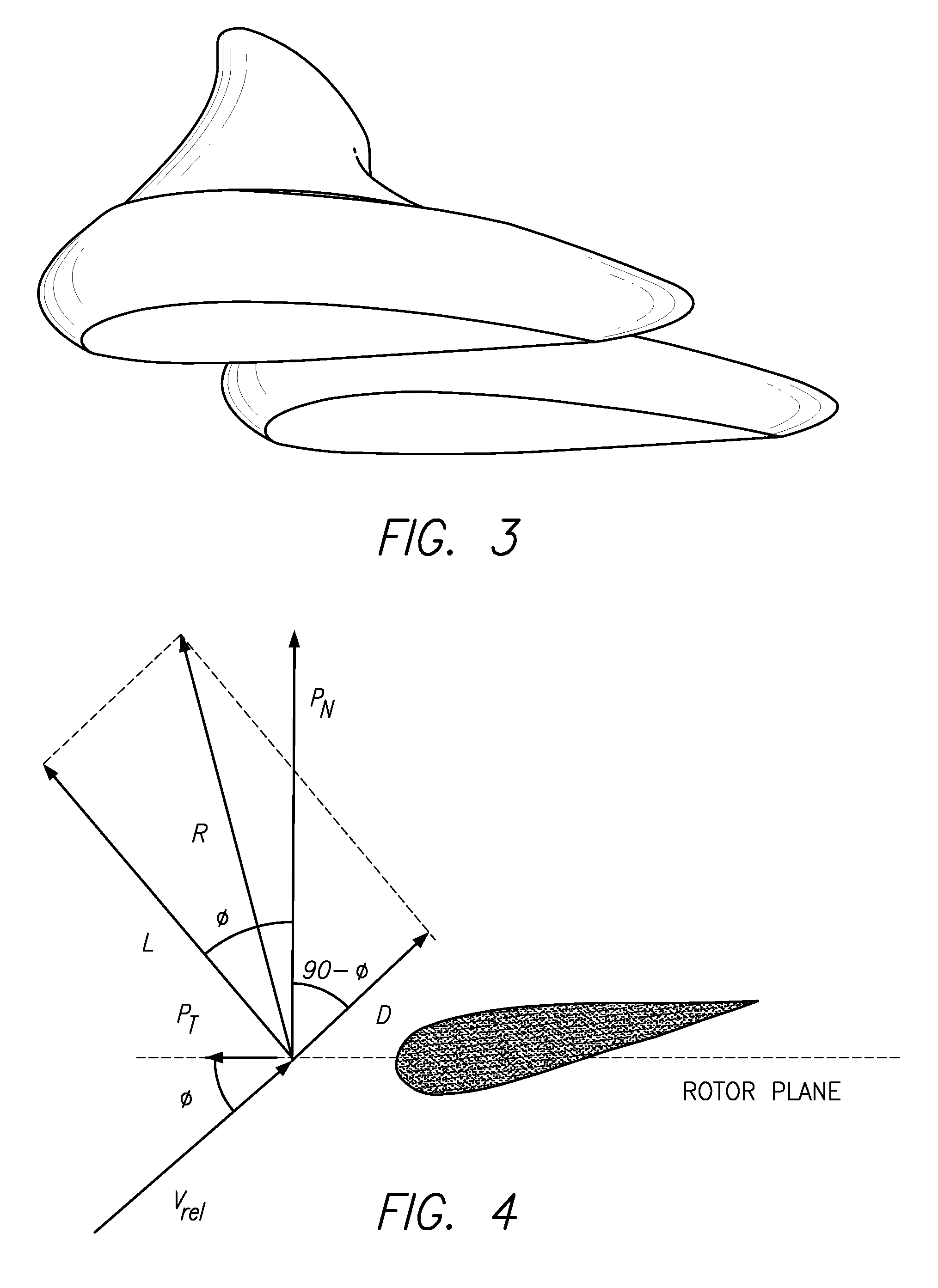Advanced aerodynamic and structural blade and wing design
a technology of aerodynamics and structural blades, applied in the direction of liquid fuel engines, vessel construction, marine propulsion, etc., can solve the problems of reducing aerodynamic efficiency, none of the approaches that have sufficiently addressed the structural load challenge of the turbine blade growth, etc., to achieve the effect of reducing the overall weight and structural requirements of the tower, reducing the amount of material, and increasing the rigidity of the tower
- Summary
- Abstract
- Description
- Claims
- Application Information
AI Technical Summary
Benefits of technology
Problems solved by technology
Method used
Image
Examples
Embodiment Construction
[0040]The detailed description set forth below in connection with the appended drawings is intended as a description of presently-preferred embodiments of the invention and is not intended to represent the only forms in which the present invention may be constructed or utilized. The description sets forth the functions and the sequence of steps for constructing and operating the invention in connection with the illustrated embodiments. However, it is to be understood that the same or equivalent functions and sequences may be accomplished by different embodiments that are also intended to be encompassed within the spirit and scope of the invention.
[0041]The present disclosure provides an improved wind turbine and airplane wing design while maintaining or improving blade structural characteristics by incorporating a biplane inboard section.
[0042]Results from analysis of this concept are provided below using a biplane composed of SC2-0714 airfoils as the alternative to the thick inboar...
PUM
 Login to View More
Login to View More Abstract
Description
Claims
Application Information
 Login to View More
Login to View More - R&D
- Intellectual Property
- Life Sciences
- Materials
- Tech Scout
- Unparalleled Data Quality
- Higher Quality Content
- 60% Fewer Hallucinations
Browse by: Latest US Patents, China's latest patents, Technical Efficacy Thesaurus, Application Domain, Technology Topic, Popular Technical Reports.
© 2025 PatSnap. All rights reserved.Legal|Privacy policy|Modern Slavery Act Transparency Statement|Sitemap|About US| Contact US: help@patsnap.com



